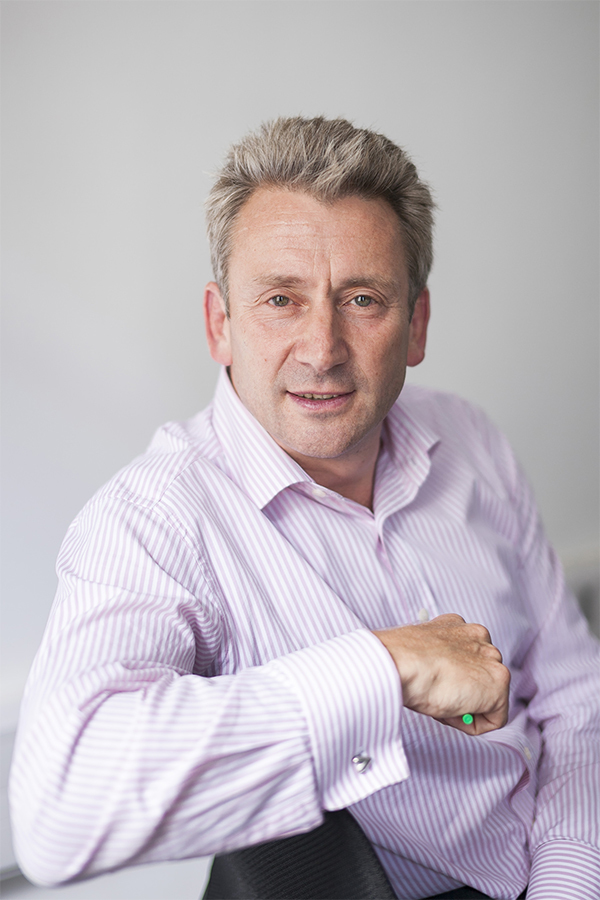
People profile: Board Director Adrian Griffiths talks about Architecture and Chapman Taylor
Please tell us a bit about your career background
I studied Architecture and Urban Design at Oxford Brookes University. Having spent my first year out in the architectural department of a design and build company, I then joined Chapman Taylor in 1986 as they were a leading practice in town and city centre regeneration.
I have a passion for urban regeneration, which combines both my Urban Design and Architectural training. I have been leading on the evolution of UK mixed-use developments, building on Chapman Taylor’s heritage.
I was promoted to the Board in 1998 and, together with my fellow board members, have evolved the business into an international practice with 17 studios employing over 450 people.
Had you always wanted to pursue a career in architecture/design?
My strengths have always been aligned with creativity, and having a father who was also an architect provided me from a young age with a better insight as to what being an architect required.
Who/what has been your greatest influence and source of inspiration?
There have been many influences in my life but, if I had to pick out one, I would choose the Urban Design Group at Oxford Brookes University, who attracted me to undertake their course in conjunction with my architectural training. This group were ahead of the game, and much of my success with Chapman Taylor is due to being able to blend both architecture and urban design to create successful places and spaces that people enjoy.
What has been your most notable project to date?
Picking out one project is hard but I would choose Cabot Circus, Bristol, because I believe this to be a ground-breaking project. Historically, most retail schemes had been single-use and enclosed with doors at the entrances. Cabot Circus was arguably the first truly mixed-use scheme consisting of retail, restaurants, leisure, community uses, residential, student housing, hotel, offices and car parking. While the value driver is the multi-level retail and leisure element which is partially covered, the development naturally fits within its urban quarter. This project attracts much attention from both our UK and international clients.
How do you approach your projects?
As most of my projects are large mixed-use masterplans, my aim is to create a development which will provide the public with an experience and a sense of place that they will bond with. The challenge is to think about what happens between the buildings, rather than within them, as this is where the experience is realised. Yes, understanding that getting the commerciality right is of paramount importance, and tenant-mixing the masterplan from the outset is fundamental. We need to create places where people want to be to spend their time and money. This is what leads to successful regeneration which will stand the test of time.
What do you think is the greatest challenge for designing in sustainability?
It should be a given that we all champion sustainable developments as part of what we do. For me, Chapman Taylor are at the forefront in the design of mixed-use schemes which are naturally sustainable and will stand the test of time. We must recognise that we have to design for culture and context depending on where we are in the world. Clearly, climates can be very different and each development will require its own bespoke solution.
What is your favourite building and why?
I have always been a fan of the Sydney Opera House for the simple reason that the original design concept is evident in the completed building. Obviously a stunning location, but the concept of the building reflecting the sails of the yachts in the harbour shines out, achieved through a commitment to push construction techniques to achieve this effect.
What do you think is the greatest challenge for architects today?
Innovation and creativity sits at the heart of what we do, but trying to get the industry to accept new ways of thinking takes time. We work in the commercial sector, which is heavily reliant on developers and institutions to fund projects. Historically, there has been a resistance to mixed-use developments because developers generally specialise in a specific sector. We have to be more creative in how we can maximise value from the land in our city centres, and mixed-use plays an important part in achieving this goal. We are gradually winning the battle but it is a challenge.
What do you think is the greatest challenge for architectural students at the moment?
I was fortunate enough to undertake my architectural training when the university fees were paid for by the government. However, today, with the course being the length it is, students are left with a huge debt which is not justified by the salaries architects are paid. I do not believe that the current situation is sustainable, which is reflected in the current review of architectural apprenticeships to help overcome this issue.
What advice would you give a newly qualified architect?
Architecture is a huge subject, and no-one can be a specialist in every sector. I believe a young architect should identify what aspects of architecture inspire them and then focus on being the best at this. If getting to the top of a practice is your ambition, then focus on who you want to work with and commit to that company. Architects that flit from company to company rarely get to the top.
What can we expect to see from Chapman Taylor over the next year?
Chapman Taylor are committed to continuing to invest in and growing the business, both in the UK and internationally. Our core value is to create buildings, places and spaces that people enjoy. We are industry leaders in the evolution of mixed-use masterplans that deliver a sense of place and the required commercial returns for our clients. Next year you will see more projects at home and abroad which clearly demonstrate that we deliver what we say we will.